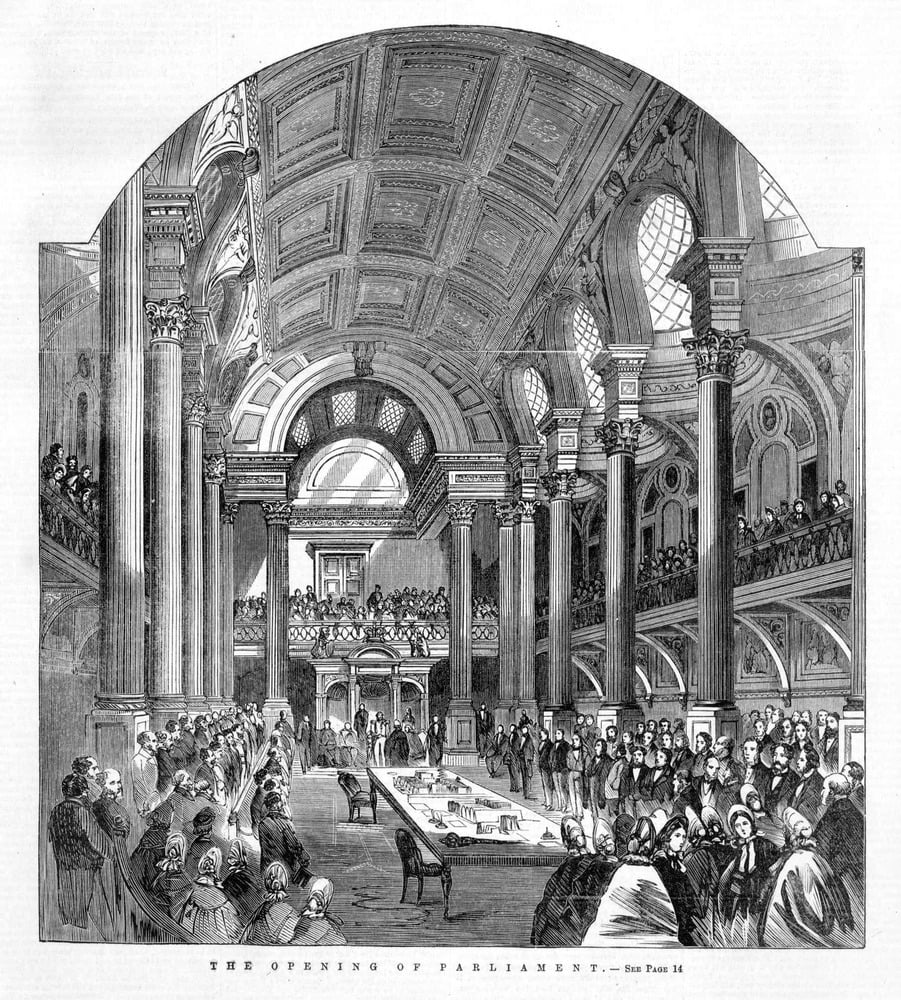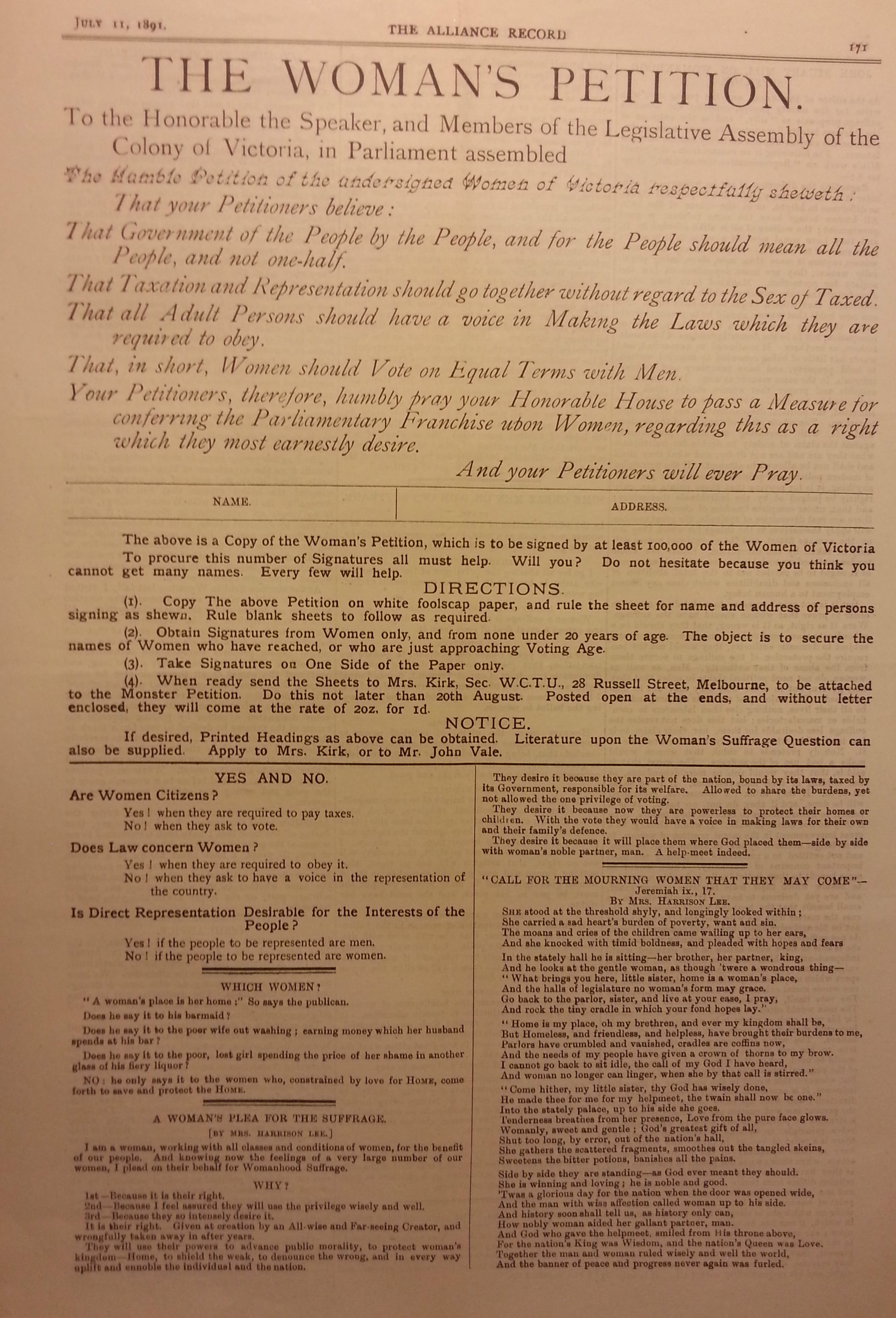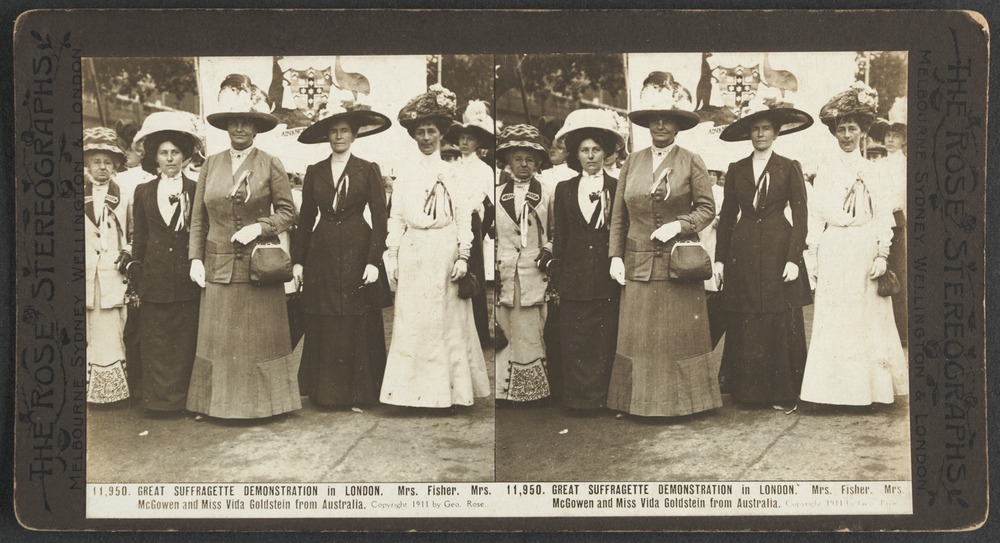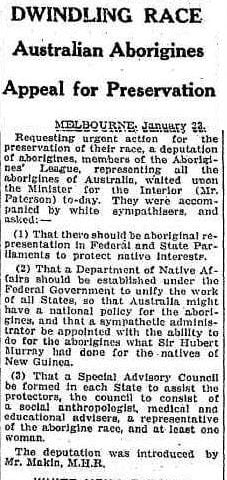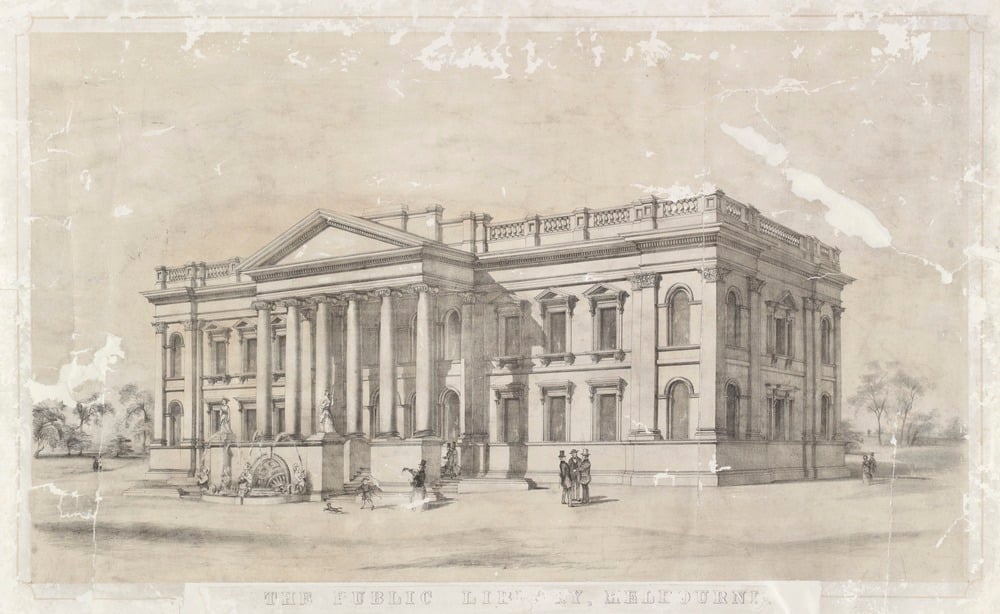 The Public Library, Melbourne, H3948
The Public Library, Melbourne, H3948
On the 11th February 1856, at 3pm, State Library Victoria, then known as the Melbourne Public Library, opened its doors for business for the first time. After an opening ceremony attended by many dignitaries, the acting Governor Major Macarthur officially opened the Library. Sir Redmond Barry, the Chairmen of the Trustees of the Library then presented a report to the Governor, and made some brief remarks.
After this a number of those attending remained in the Library to inspect some of the 3,000 books including notable works such as The birds of Australia by John Gould, along with some charts and maps which had been placed on display. The response to the new institution was generally positive although a letter appeared in The Argus only a few days later complaining about the shortness of the opening hours, which at that time were 10am to 4pm (in winter), and 10am to 5pm (in summer).These were the first of many comments the Library has had about opening times over the years.
From a beginning of 3000 books, the Library’s collections has grown to over 8 million items, and we are now open until 9pm four nights a week, and every other day until 6pm. Over the years, as the Library’s own timeline has developed, Victoria has experienced many significant and memorable events, some of which are listed below.
Timeline of events 1856 to 2016
- 1850s: the first Parliament of Victoria
The opening of the Melbourne Public Library was followed later that year by the opening of the first Parliament of Victoria on the 21 November 1856 which represents the beginning of representative democracy in Victoria.
The opening of Parliament, IAN24/02/64/9
- 1860s: the first Melbourne Cup, 1861
One of the great sporting events of Australia began with the running of the first Melbourne Cup horse race on 7 November 1861.
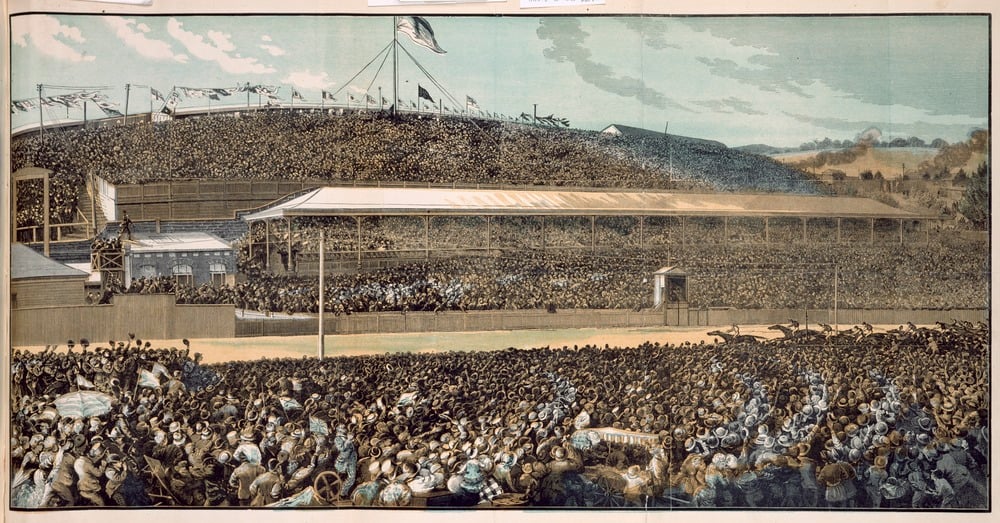 The finish of the Melbourne Cup 1881, IAN05/11/81/supp
The finish of the Melbourne Cup 1881, IAN05/11/81/supp
- 1870s: Education Act, 1872 ‘Free, Secular and Compulsory’
The 1870s saw the introduction of landmark education reforms. Primary school education in Victoria became free, compulsory and secular. This was one of the first examples of this type of legislation and education policy in the world.
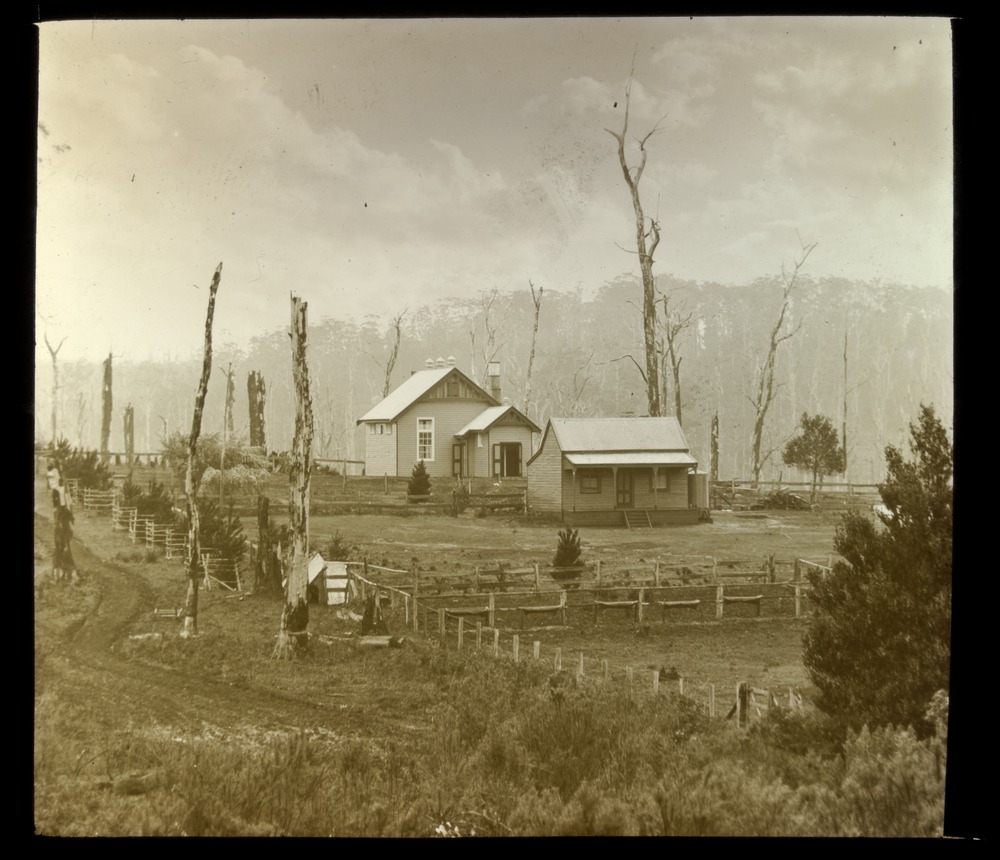 State School Upper Moondarra, nr. [ i.e. near] Walhalla, H2009.100/562
State School Upper Moondarra, nr. [ i.e. near] Walhalla, H2009.100/562
- 1880s: Ned Kelly trial and execution
Ned Kelly, Australia’s most infamous bushranger was executed in the Old Melbourne Gaol on the 11 November 1880. A little later in the decade, in 1885, Melbourne saw its first cable line tram service which ran from the City to Richmond.
 The Kelly Trial – the scene in Court, IAN06/11/80/201
The Kelly Trial – the scene in Court, IAN06/11/80/201
- 1890s: the Monster Petition, 1891, for Women’s voting (suffrage) rights
Agitation for political rights for women gathered momentum in the 1890s. One significant initiative was the Monster petition of 1891, which called for women to be given the same voting rights as men in elections. The petition was one of the largest of its kind gathering over 30,000 signatures.
The Monster petition of 1891
- 1900s: Women gain the right to vote in Federal and State elections
Victorian women finally gained the right to vote in Federal elections in 1903 and in State elections in 1908. Earlier campaigns such as the Monster petition of 1891, as well as many years of campaigning, led to this right being achieved. Victorian women like Vida Goldstein then lent their support to women in England for the same rights.
Great suffragette demonstration in London, H42581/51
- 1910s: Military conscription debates
The debate whether to have conscription for overseas military service during World War One was at its most intense in Melbourne where Catholic Bishop Daniel Mannix led the campaign against conscription.
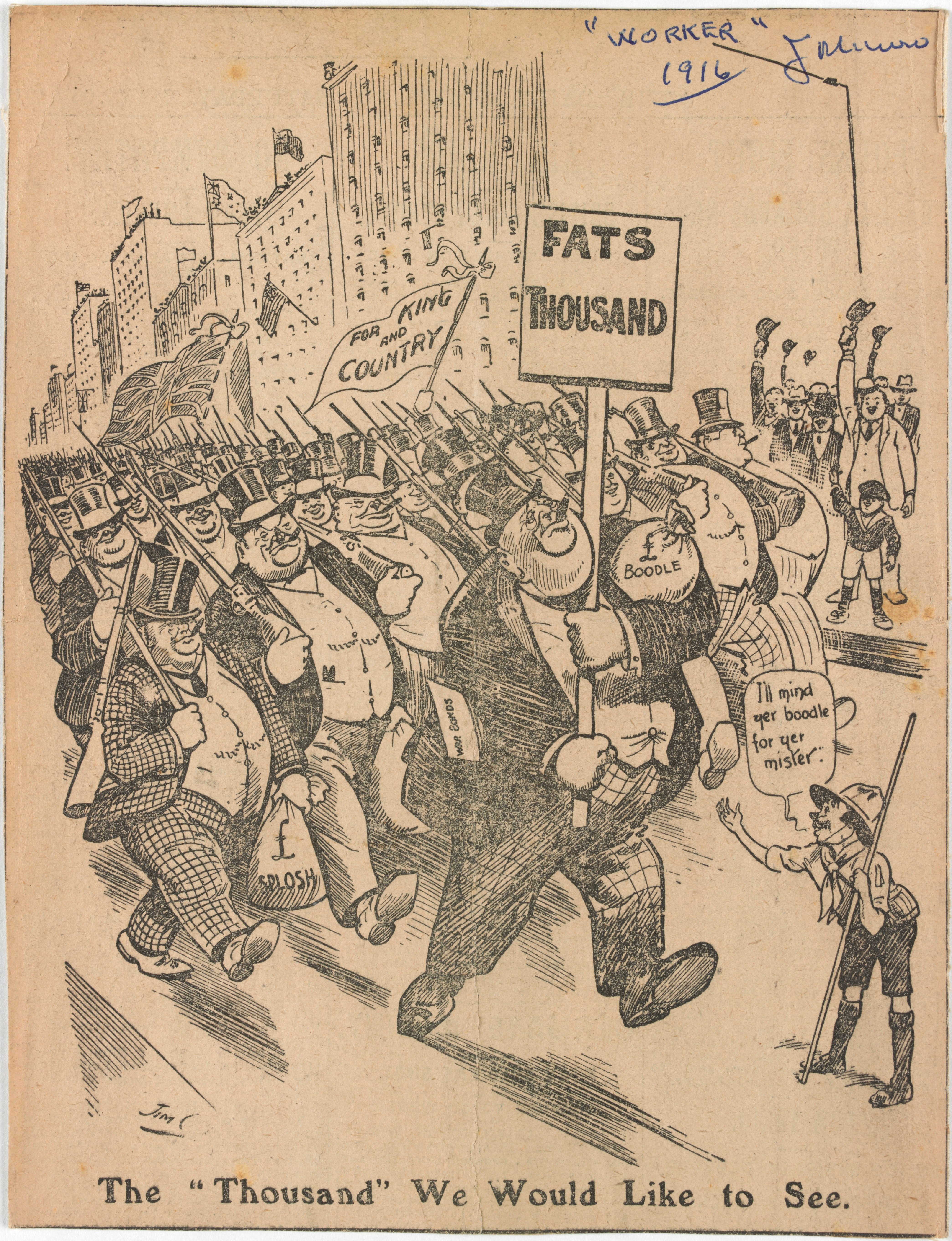 The “thousand” we would like to see
The “thousand” we would like to see
- 1920s: Police strike of 1923
Large numbers of Victorian police in the city of Melbourne and other metropolitan districts took industrial action on 31 October 1923. This led to scenes of civil disorder and some looting in the streets of Melbourne for a few days.
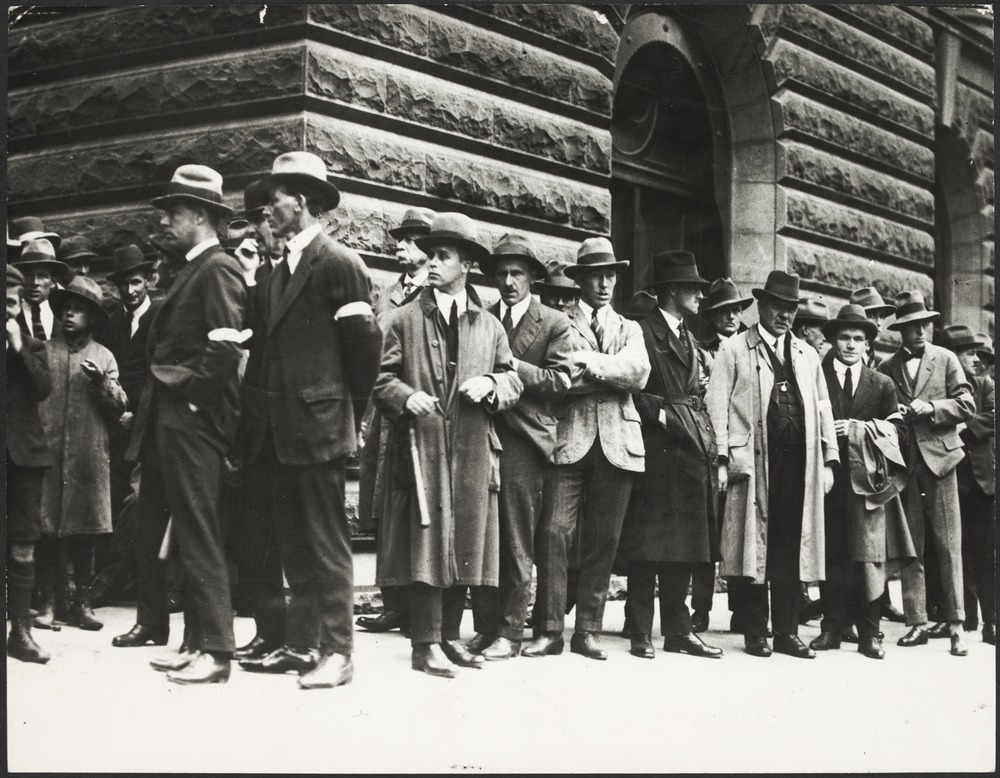 A queue of men lining up outside the Melbourne Town Hall to volunteer as special constables during the Police Strike. H2015.111/1
A queue of men lining up outside the Melbourne Town Hall to volunteer as special constables during the Police Strike. H2015.111/1
- 1930s: Foundation of the Australian Aborigines League
William Cooper and other Aboriginal leaders in Victoria founded the Australian Aborigines League in the early 1930s. The League became one of the most important early advocacy groups for Aboriginal people in Victoria and beyond. One of the early campaigns was to seek Aboriginal representation in the Federal Parliament.
The Hobart Mercury, 24 January 1935, p. 11.
- 1940s: the last cable tram
Electric trams began to overtake the use of the earlier cable trams in the early 20th century. In 1940 the last of the cable trams ceased running.
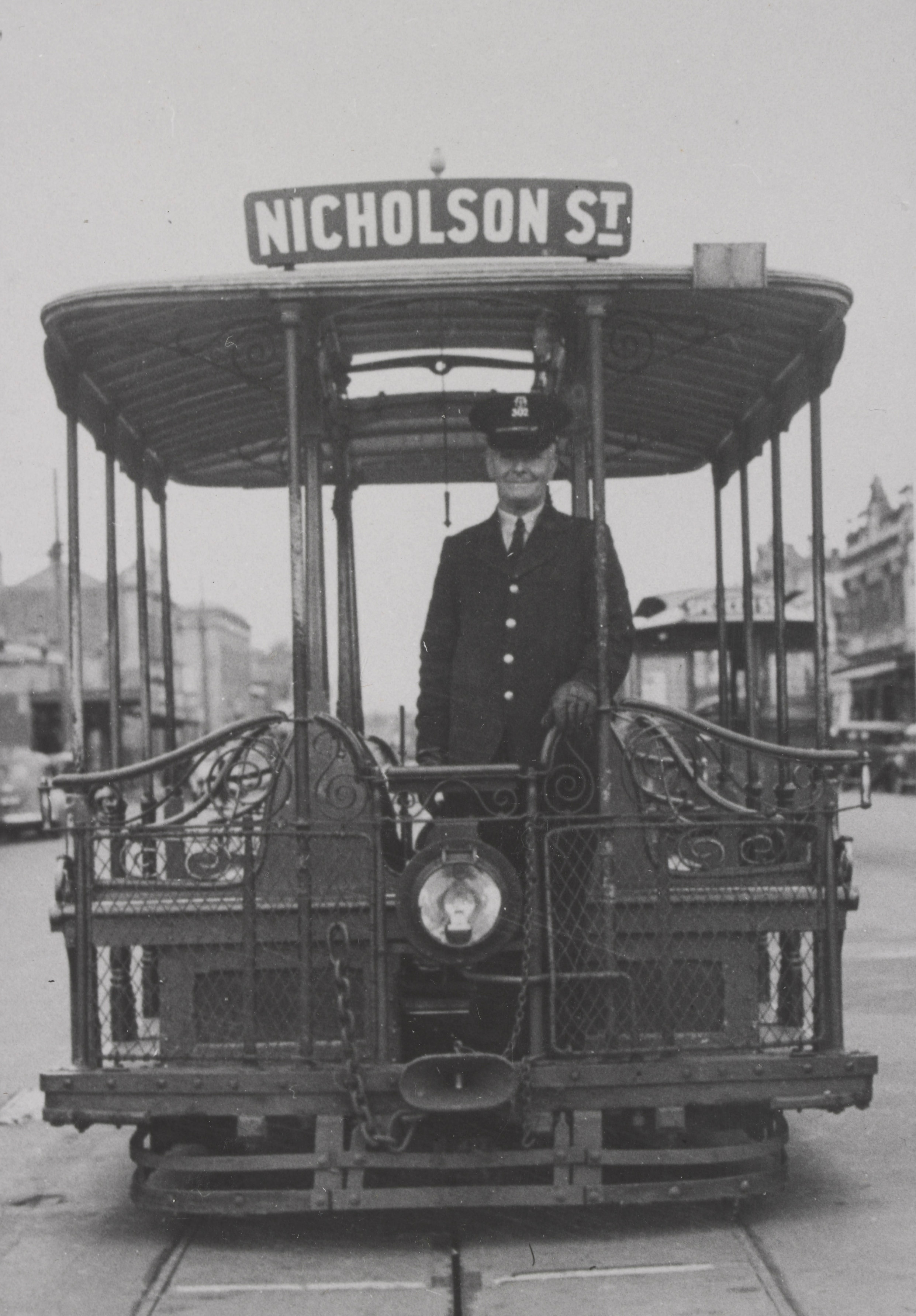 The passing of the Melbourne Cable Tramways, H11845 j
The passing of the Melbourne Cable Tramways, H11845 j
- 1950s: Olympic Games in Melbourne, 1956
The first Olympic Games outside of Europe or the United States of America were held in Melbourne in 1956, from 22 November to 8 December. Huge crowds flocked to the events and the new facilities such as the Olympic Pool and the new stands at the Melbourne Cricket Ground.
New Olympic Swimming Pool. Olympic Park. Melbourne. Vic. 1955-56, H91.244/661. This work is in copyright.
- 1960s: The Beatles perform in Melbourne, 1964
The Beatles, the world’s most popular musical group arrived on 14 June 1964 to perform three concerts at Festival Hall. Huge crowds assembled outside their hotel, the Southern Cross Hotel, on the corner of Bourke and Exhibition Streets.
Beatles greeting crowds at the Southern Cross Hotel, Melbourne, H2011.2/82. This work is in copyright.
- 1970s: The West Gate Bridge disaster, 1970
One of Australia’s worst industrial disasters occurs when a section of West Gate Bridge collapsed during its construction, killing 35 men on the 15 October 1970.
Port Melbourne, West Gate Bridge. September 1970, H98.250/2167. This work is in copyright.
- 1980s, Theft of Picasso masterpiece, 1986.
In August 1986 the Pablo Picasso painting, Weeping Woman, then valued at nearly 2 million dollars, was stolen from the National Gallery of Victoria. A group calling itself the Australian Cultural Terrorists claimed responsibility and threatened to destroy the painting if a series of demands centred around increased funding for the arts were not met. The painting was found largely undamaged later that month. The crime remains unsolved.
Picasso Theft, Self Portrait, Juan Davila, H92.462. This work is in copyright.
- 1990s: Freeways and Tunnels
Construction of major new roads and tunnels takes place in Melbourne during the late 1990s. City Link opens in August 1999, the Domain Tunnel on 16 April 2000 and the Burnley Tunnel on 22 December 2000.
 Plastic lining in Burnley tunnel prior to pouring of concrete segments March 1998. H99.20/17. This work is in copyright.
Plastic lining in Burnley tunnel prior to pouring of concrete segments March 1998. H99.20/17. This work is in copyright.
- 2000s: Bushfires
Victoria suffers from major bushfires in 2002-2003, 2006-2007 and culminating in the Black Saturday fires of February 2009
 Wildfire moves through the town of Omeo burning everything in its path for three hours, H2004.73/6. This work is in copyright.
Wildfire moves through the town of Omeo burning everything in its path for three hours, H2004.73/6. This work is in copyright.
- 2010s: Election of Julia Gillard, first female Prime Minister of Australia.
A Member of Parliament for the federal electorate in Melbourne. In November 2015, Michelle Payne became the first female jockey to win the Melbourne Cup.
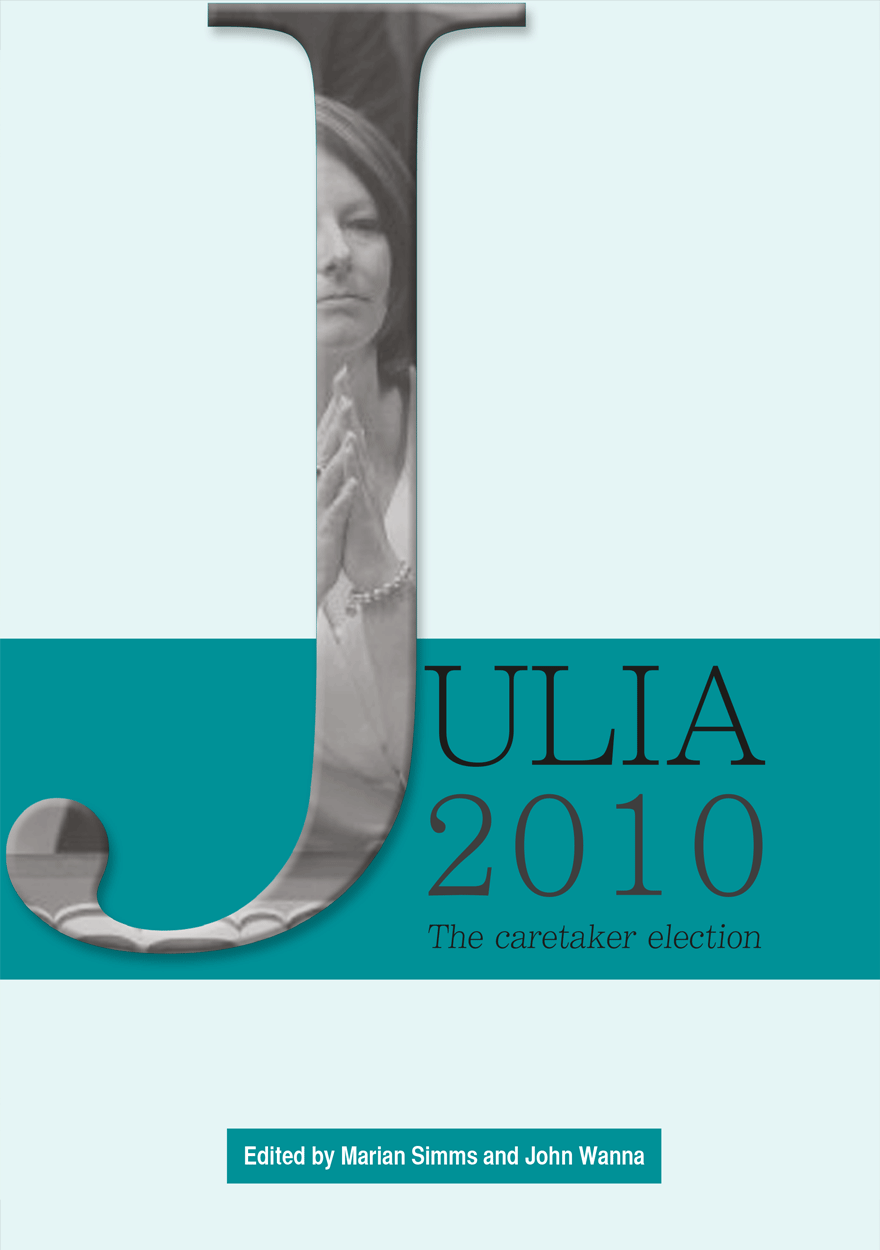 Julia 2010: the caretaker election, [e-book]
Julia 2010: the caretaker election, [e-book]

